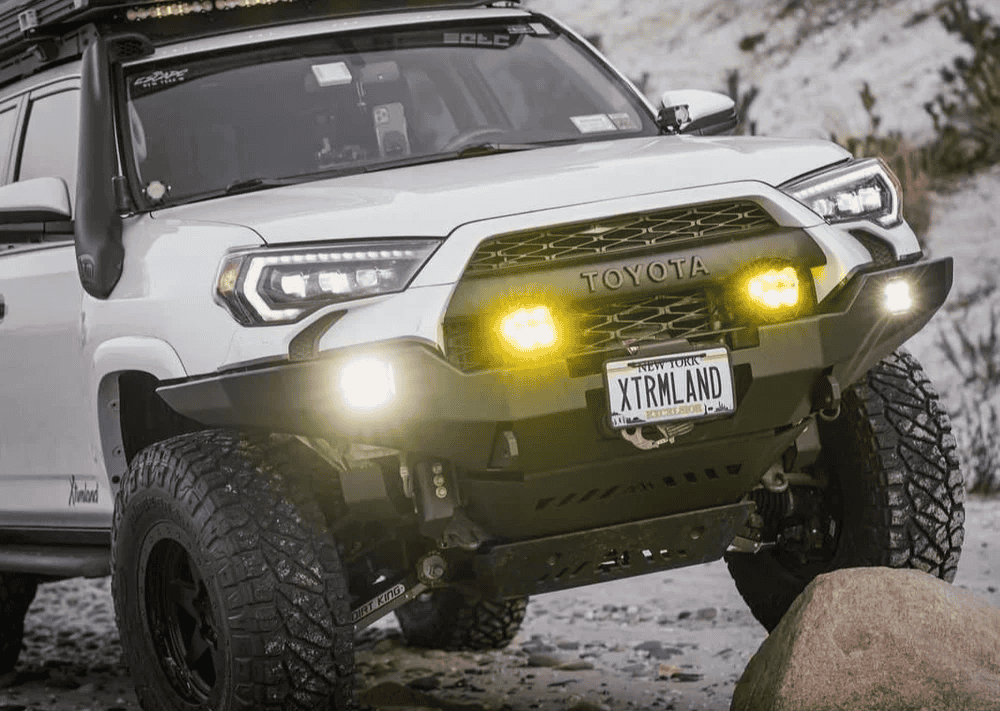Overland Vehicles

A good roof rack starts with numbers, not parts. Trucks have a dynamic roof rating that covers what the roof can handle while moving, and a higher static rating for when the vehicle is parked. Off road impacts increase forces on the rack, so a safe trail load is usually well below the on road limit. Keep cargo weight low and centered over strong structure, and remember that every pound above the cab raises the center of gravity. Treat your roof space as prime real estate for lighter, bulky items and reserve heavy gear for the bed or frame mounted rack.
Check the manufacturer roof rating and subtract the rack weight and accessory weight to find your real cargo allowance. A light aluminum platform plus crossbars can eat a surprising slice of that margin. If your setup includes an awning, shovel mounts, traction boards, and a light bar, weigh those items before you commit to a layout. The goal is a stable truck that tracks straight on the highway and remains composed on washboard and rock steps.
On a cab roof, common approaches include track systems that spread load along the roof channel, clamp style feet that use the door jamb area, and bolt in solutions using factory points. Beds use stake pocket mounts, bedside clamps, or rails tied into the bed channel. Tracks distribute load well and allow fore aft adjustability. Clamp mounts avoid drilling but demand exact torque and periodic checks. If drilling is required, use quality hardware with backing plates where possible to spread stress.
Crossbar spacing depends on the cargo. A rooftop tent likes the bars spread to match its rails. A long case or solar panel prefers three points of support. Wherever you penetrate the roof, protect bare metal, apply butyl tape as a gasket under the fastener flange, and finish the edge with a polyurethane sealant designed for automotive or marine use. Use nylon insert nuts or threadlocker where specified, and re torque after the first thousand miles.
Any rack adds drag and can make noise. A wind fairing with the right angle calms airflow across the sunroof area, while small vortex strips or edge guards on the leading bar cut whistling. Cable management matters just as much. Run wires for lights or a solar panel through a sealed gland or grommet, sheath them in abrasion resistant loom, and secure them with UV stable clips along inside channels. Keep wiring away from sharp edges and moving panels.
Use cam straps with protective sleeves and rated anchor rings rather than bungee cords. Tie down fore and aft to prevent shifting, and give soft goods a weatherproof bag. Measure overall height with your full loadout; a simple note on the dash saves you from a low parking structure. After dusty or wet trail days, rinse the rack, inspect joints, and touch up nicks to prevent corrosion. A quick torque check on core hardware keeps the system tight for the long haul.
Many overland trucks run a bed rack for heavy items and a cab rack for lighter gear. This split keeps mass low over the rear axle and reserves the roof for items you want quick access to, like traction boards or an awning. Align crossbars between the two racks if you carry long items to reduce flex. If you bridge loads from bed to cab, confirm both structures can share the load and avoid point stress at the cab seam.
Desert corrugations, Appalachian forest roads, and winter highway miles each stress a rack differently. Desert heat can soften adhesives and expose plastics, so rely on mechanical fasteners and heat tolerant cable sleeves. Mud and salt demand generous drainage paths and frequent rinsing. Long highway trips reward aerodynamic touches and a clean layout with minimal frontal area. The best roof rack installation for overland trucks is the one tuned to the way you travel.
If you want a rack that carries smart, runs quiet, and integrates cleanly with lighting, awnings, and power, partner with specialists who build for real off road use. Our team designs mounting that respects your truck’s structure, routes wiring with service in mind, and sets crossbars for your actual cargo. Explore our Overland rigs to see what a well planned platform looks like, then browse a Custom overland upfit for ideas on accessories and power systems that pair with your rack.
We are based in Fayetteville, Arkansas, and we hand off builds the right way. You will get a walk through, trail ready tips, and a clean install that stands up to weather and washboard. Learn more about our process at Why choose OZK and bring your overland plan to life.
Ready for a rack that runs quiet, carries real weight, and looks dialed? Tell us how you travel. OZK Customs will engineer a rack solution, integrate lighting and power, and hand you a system that is trail proven and road quiet. Start your build conversation now.
ADDRESS:
6159 E Huntsville Rd, Fayetteville, AR 72701
PHONE:
(479) 326-9200
EMAIL:
info@ozkvans.com